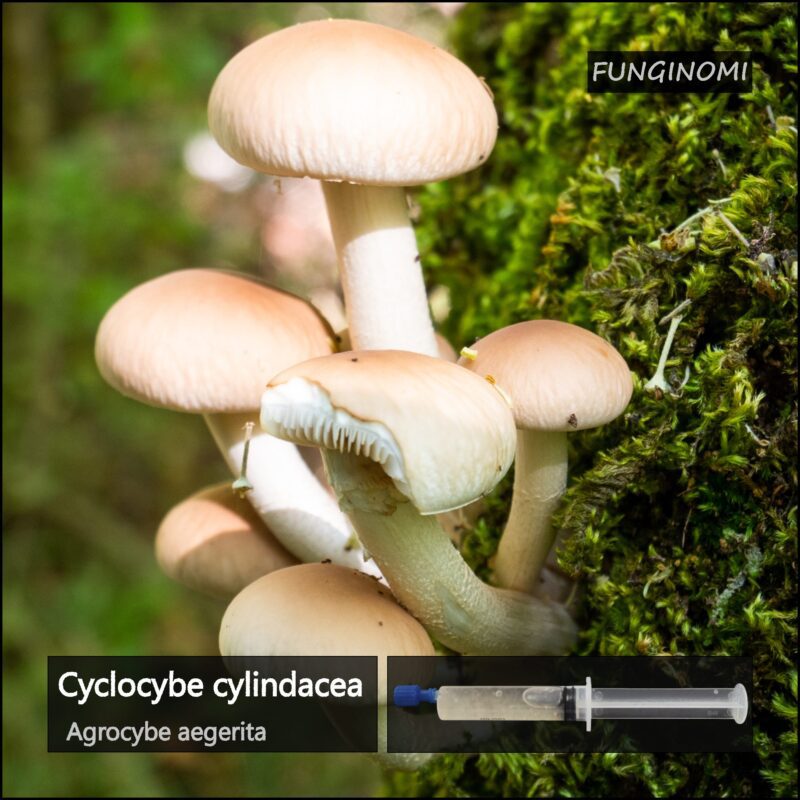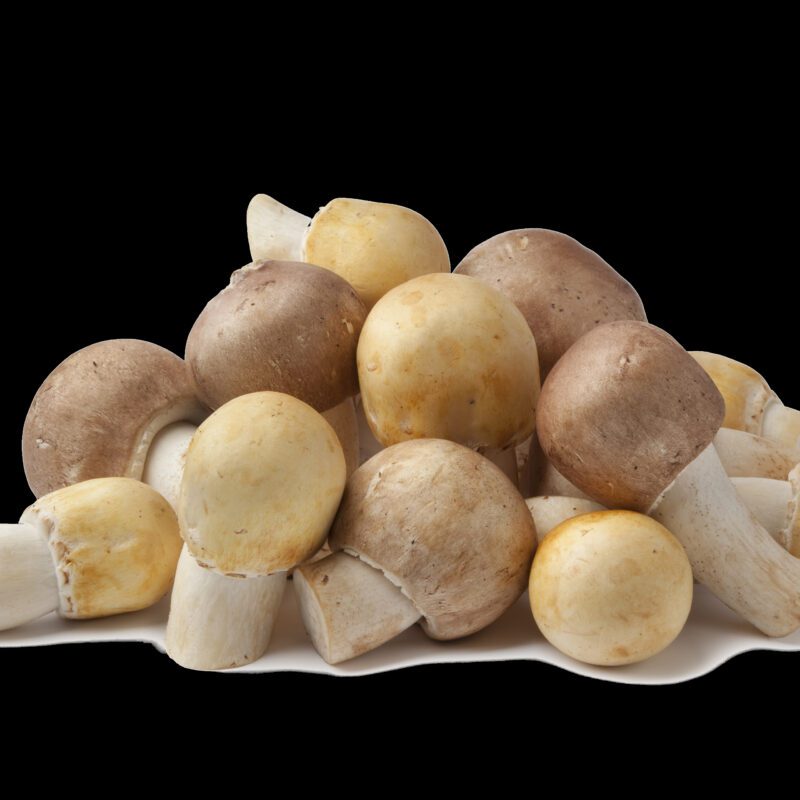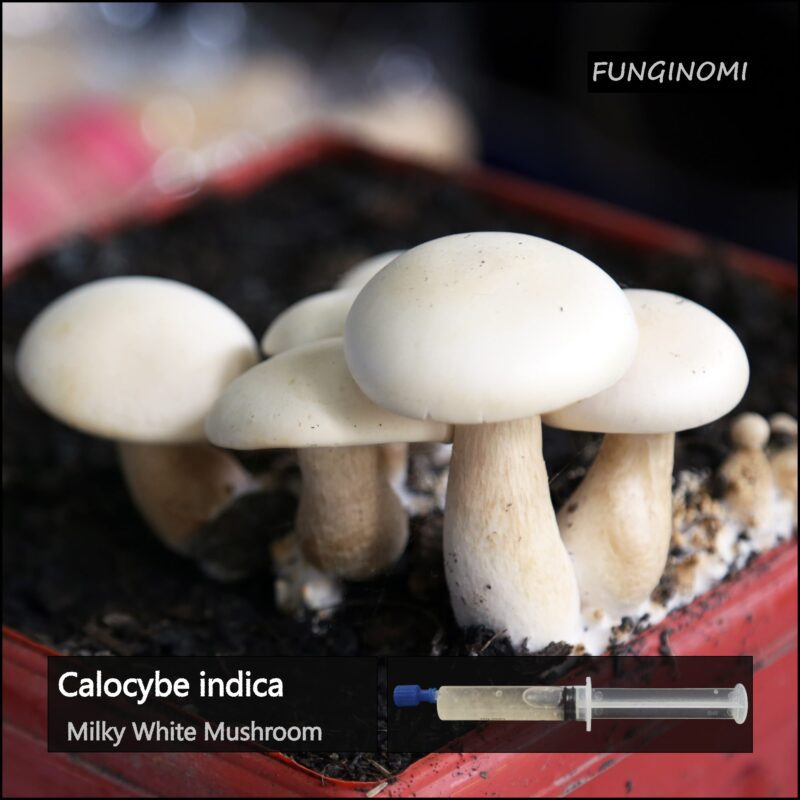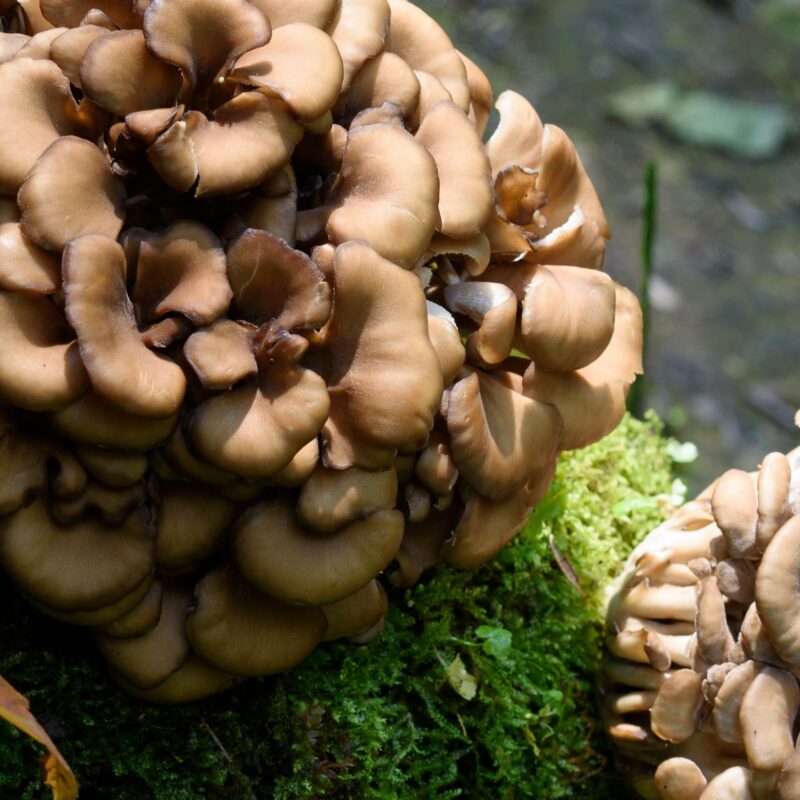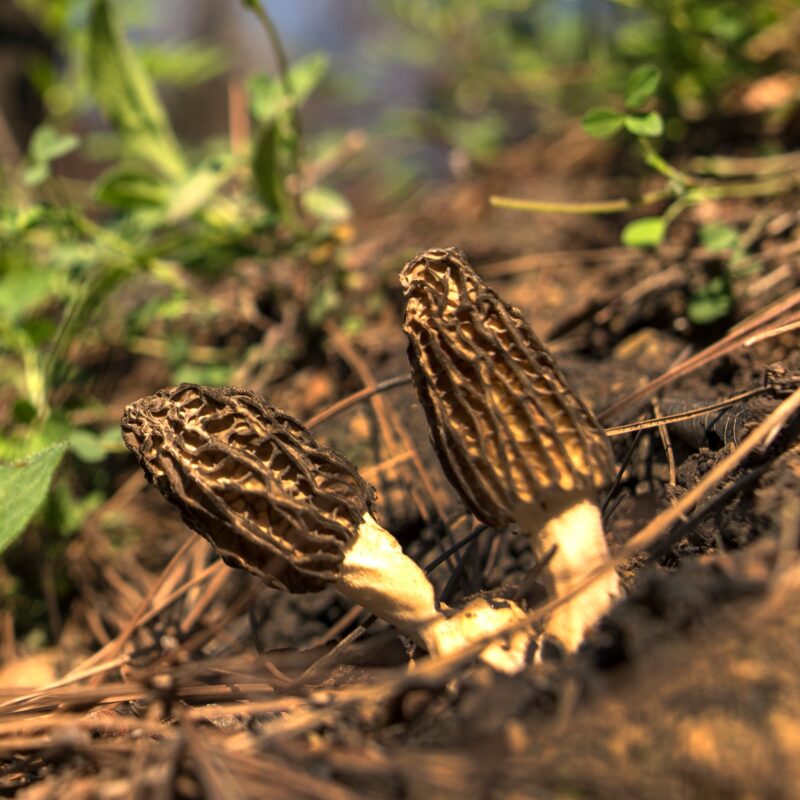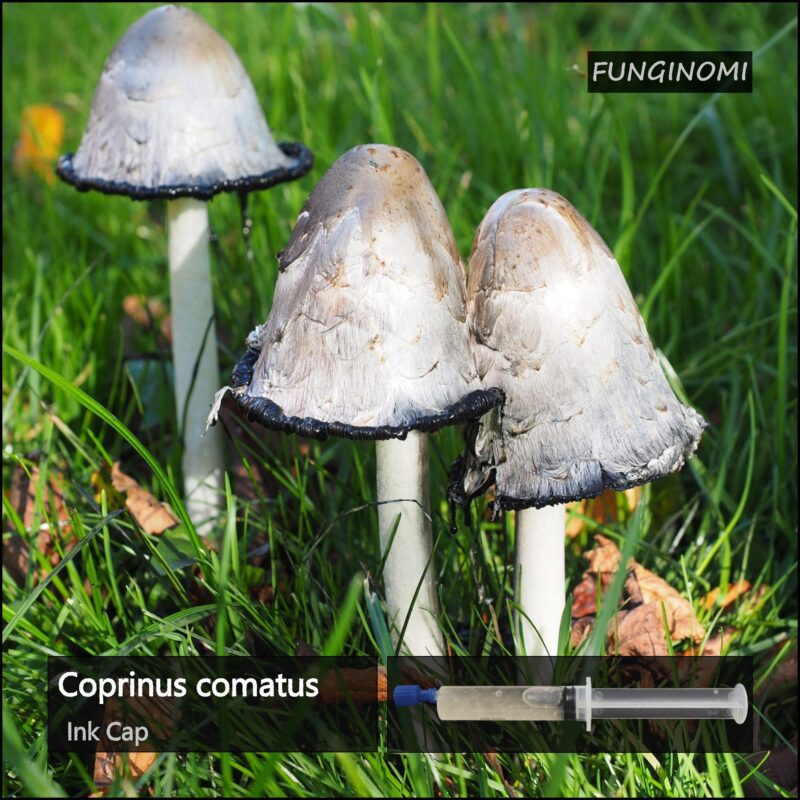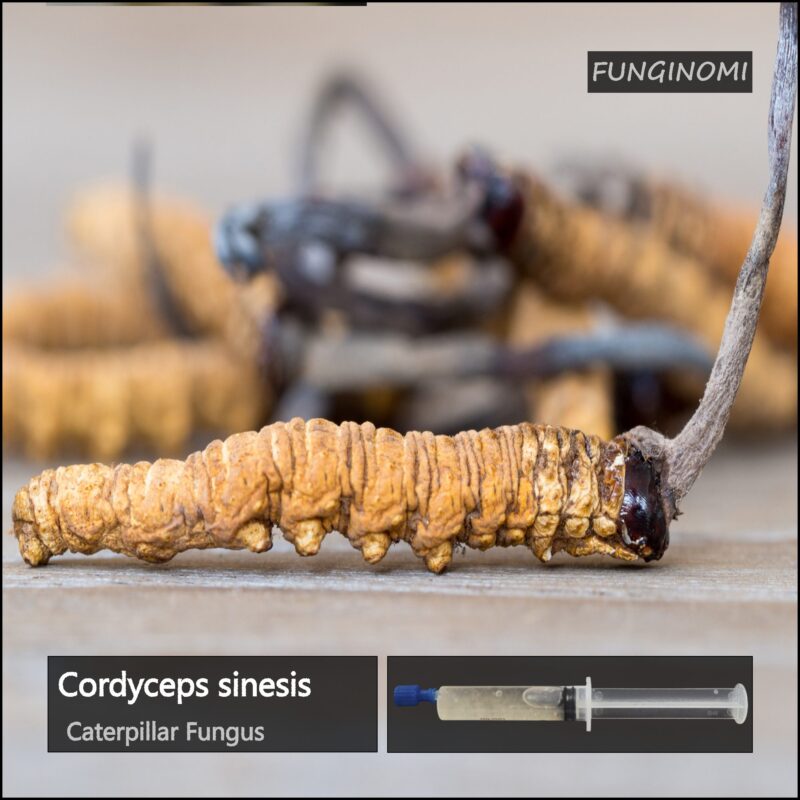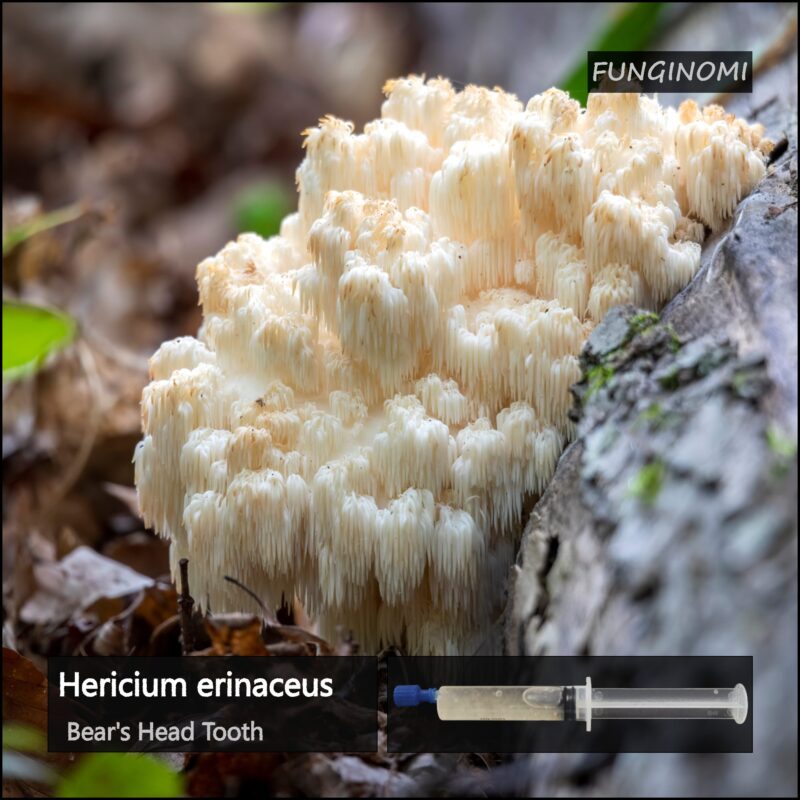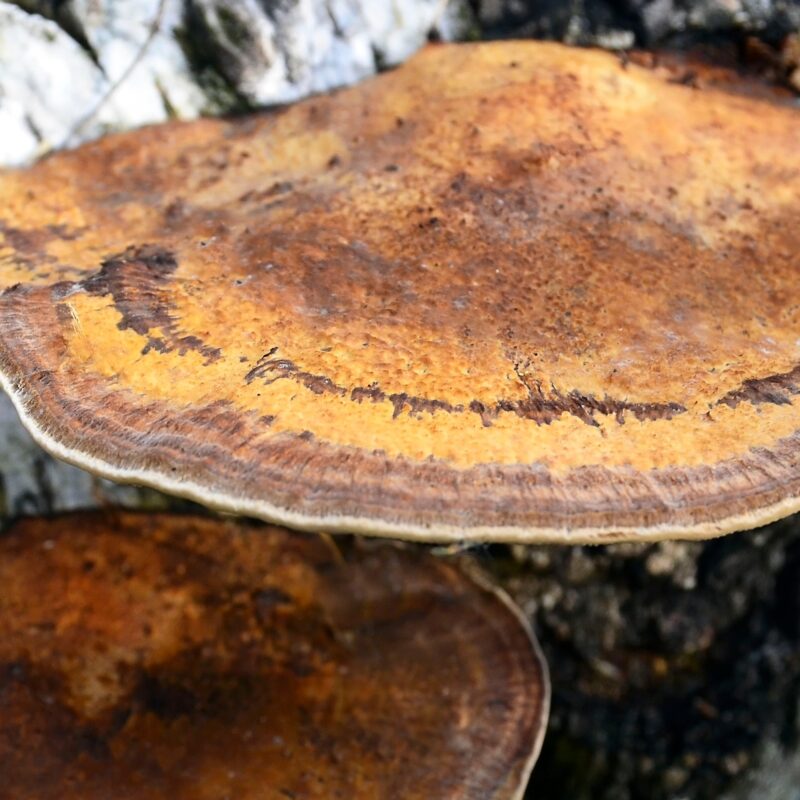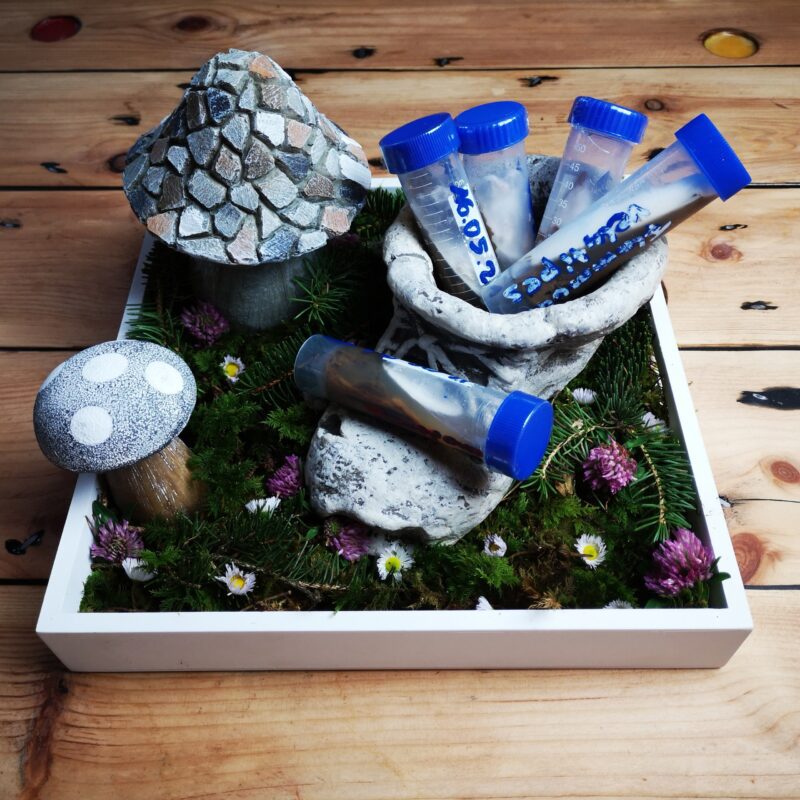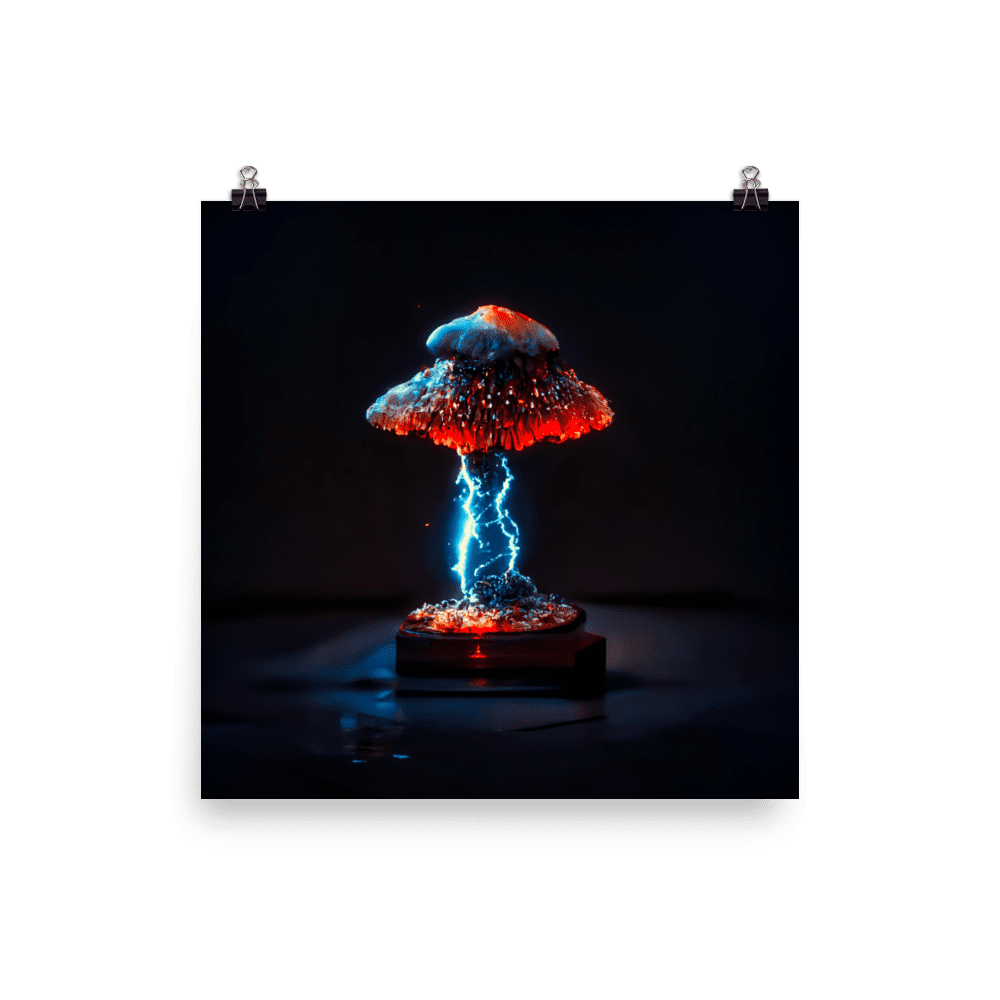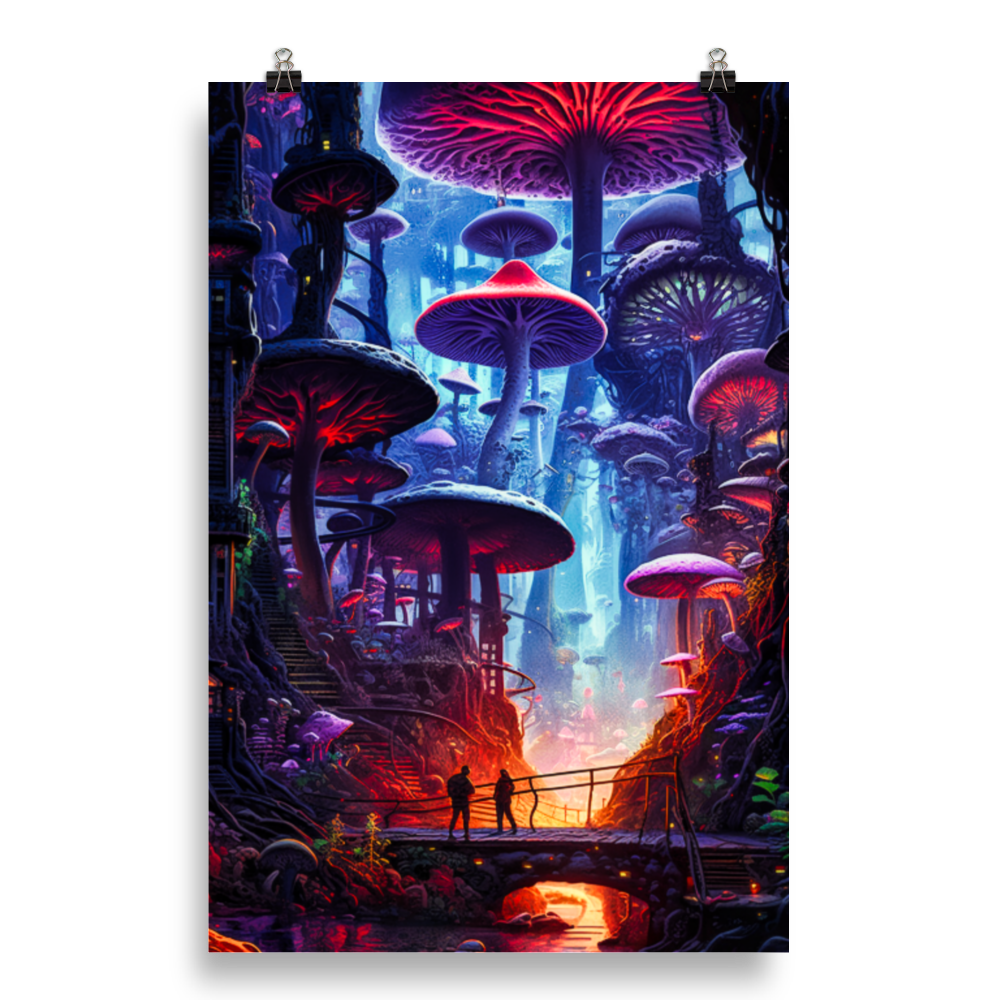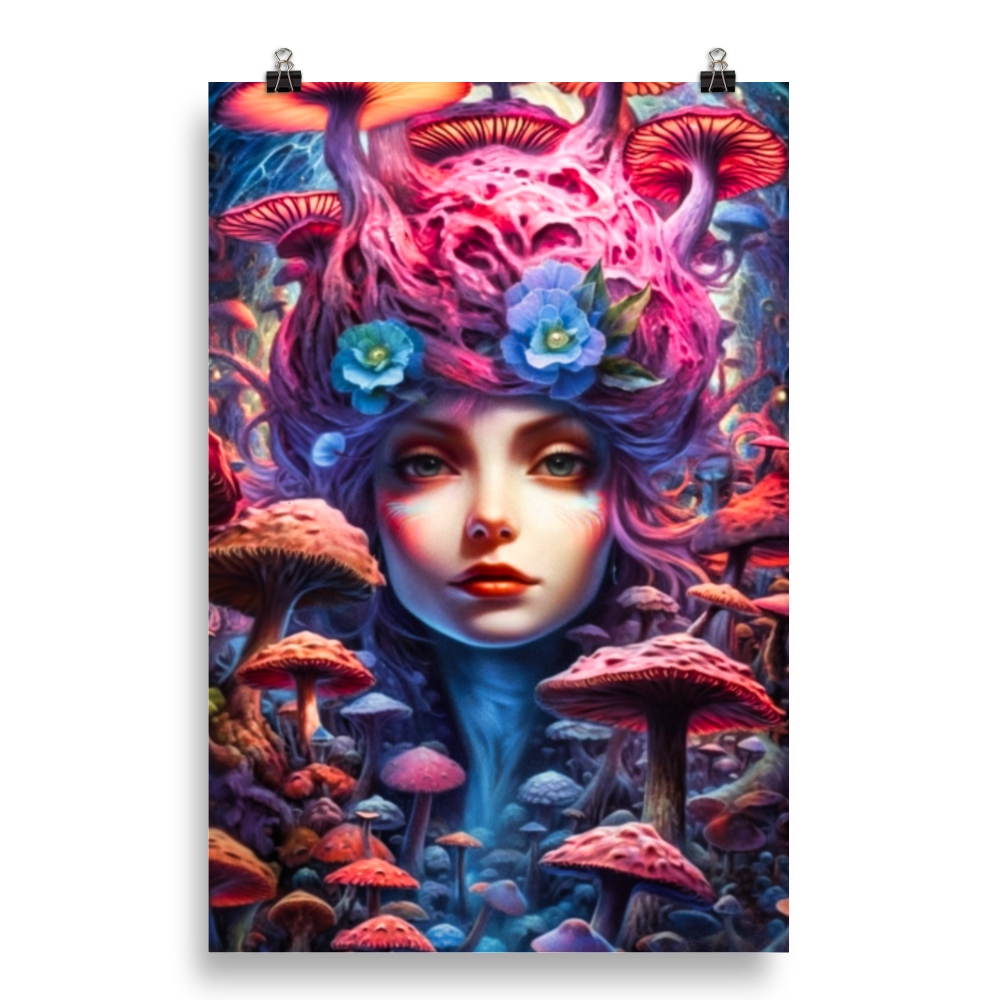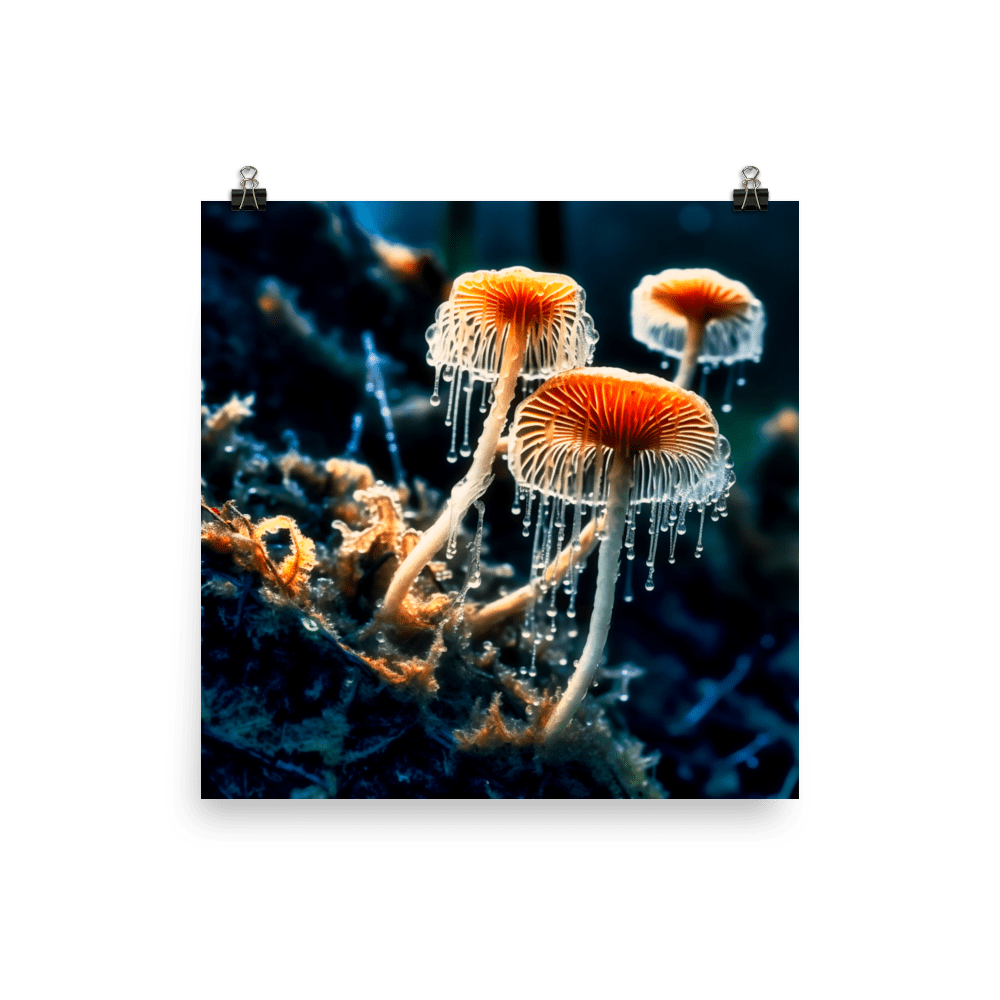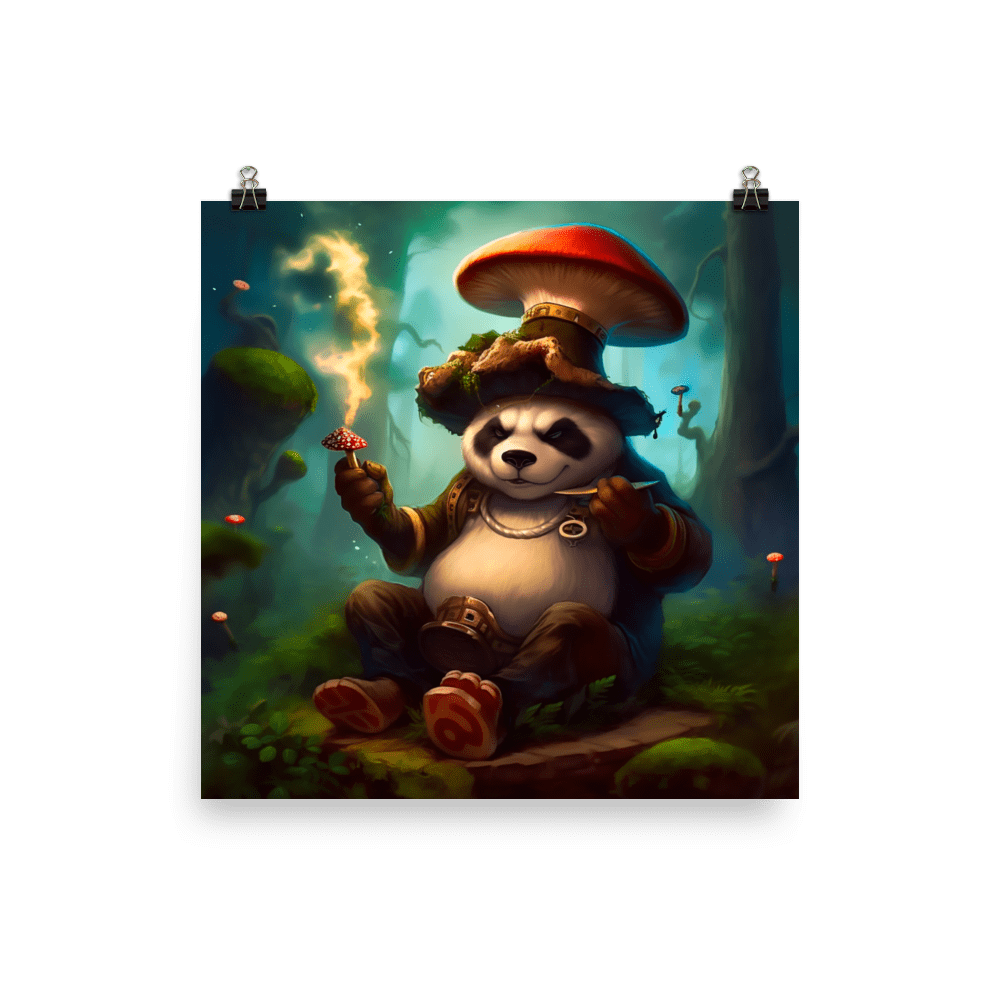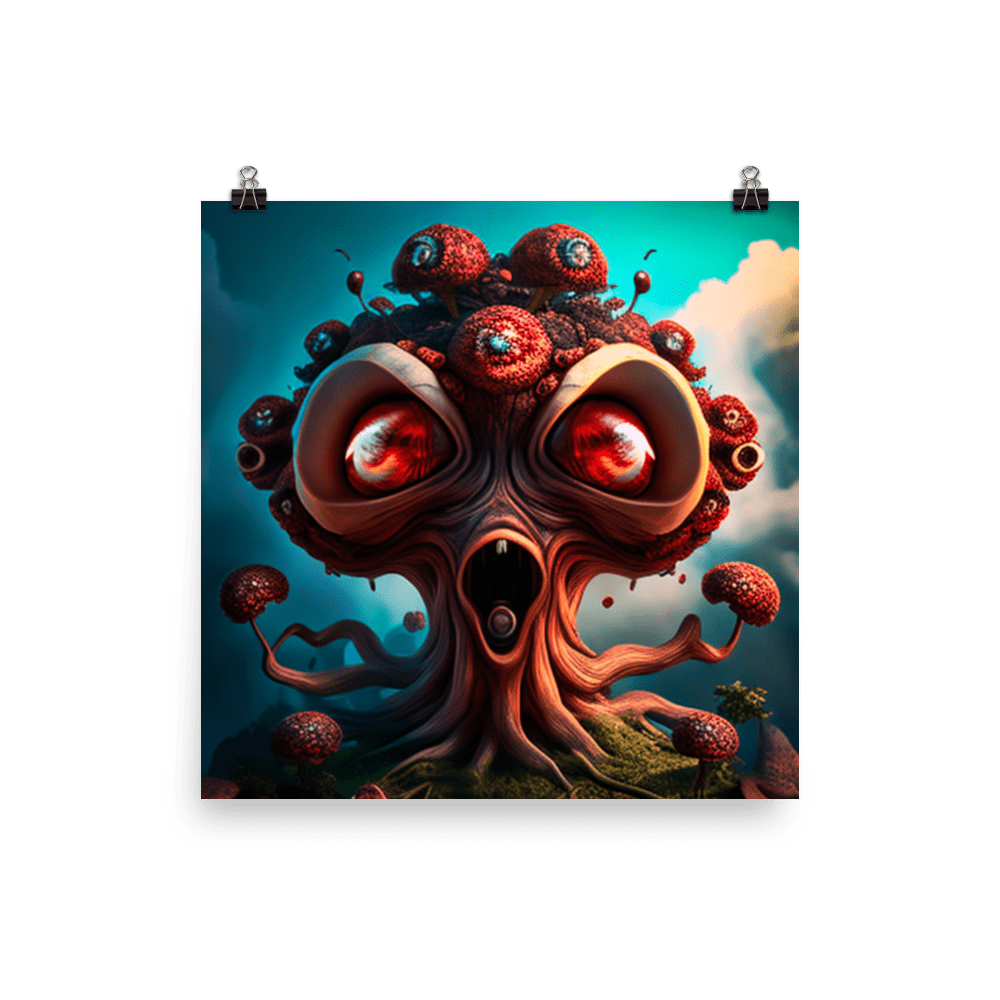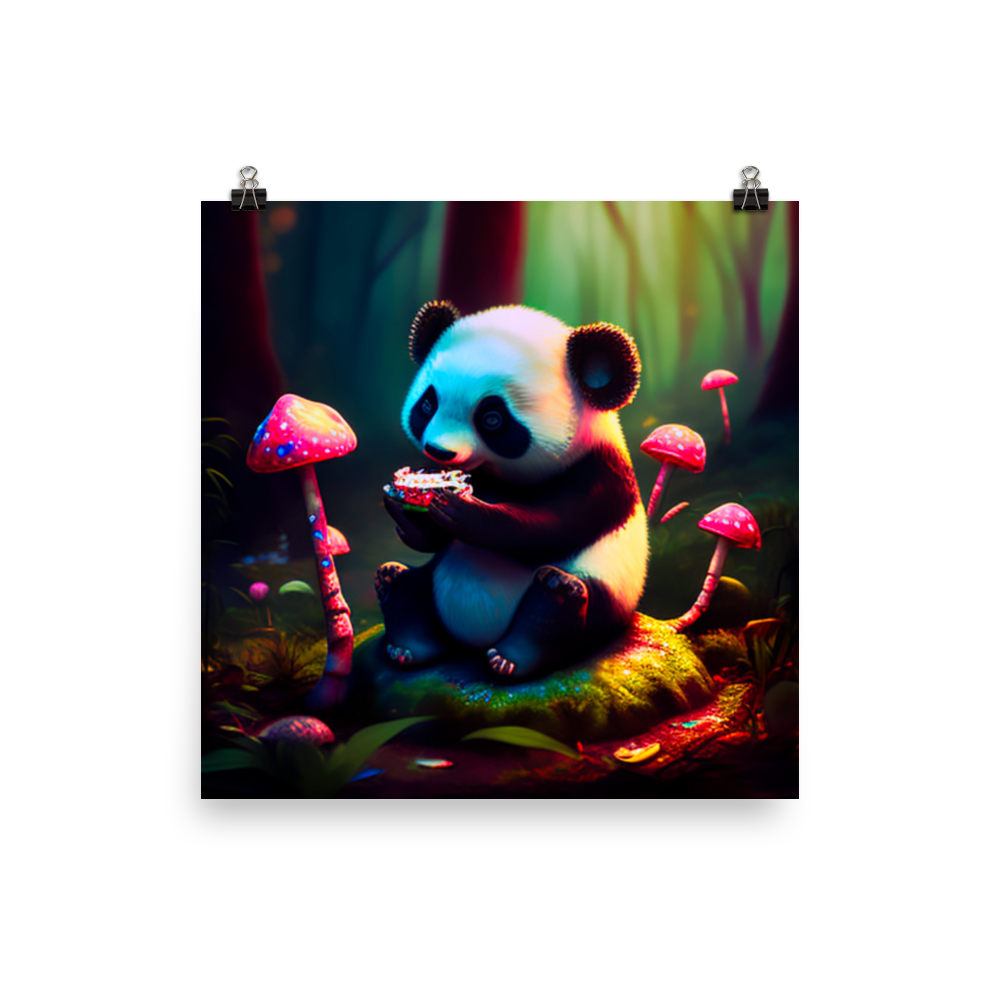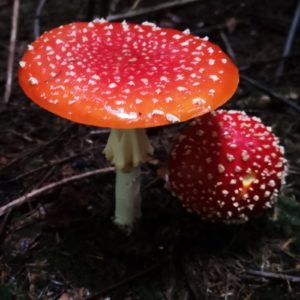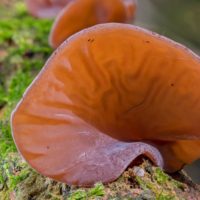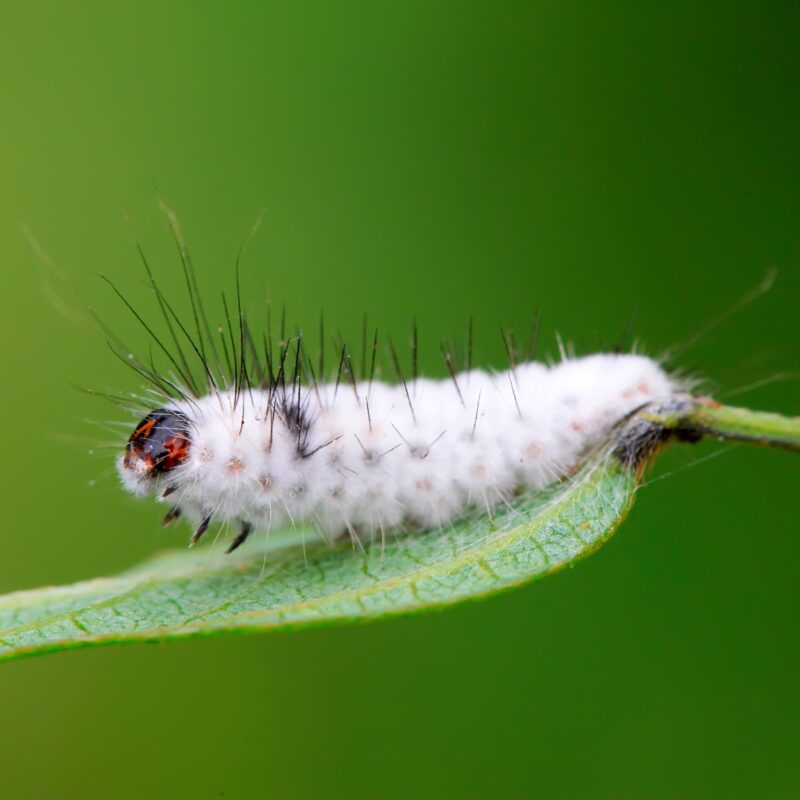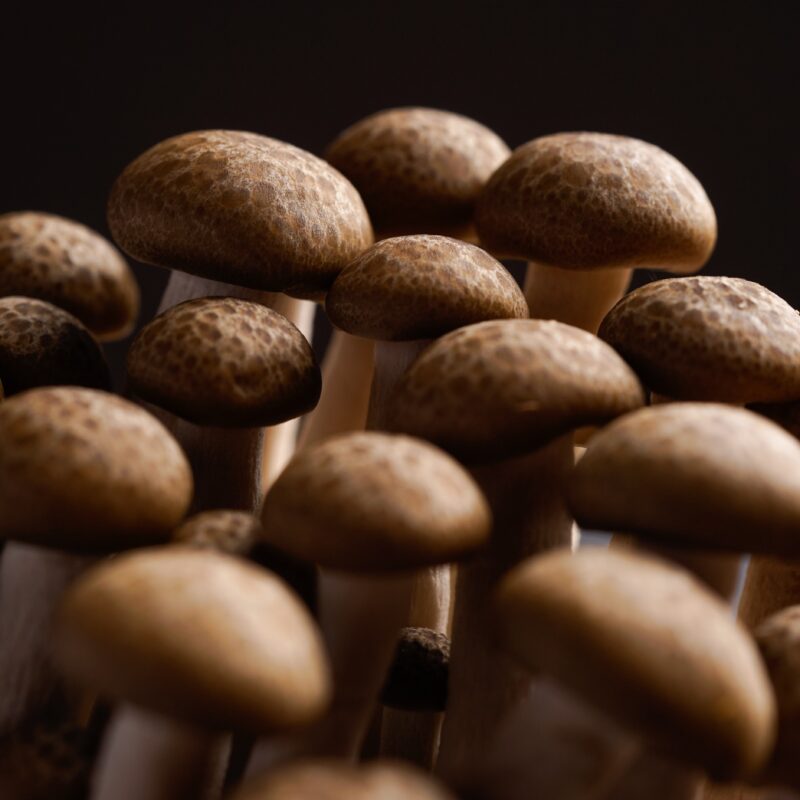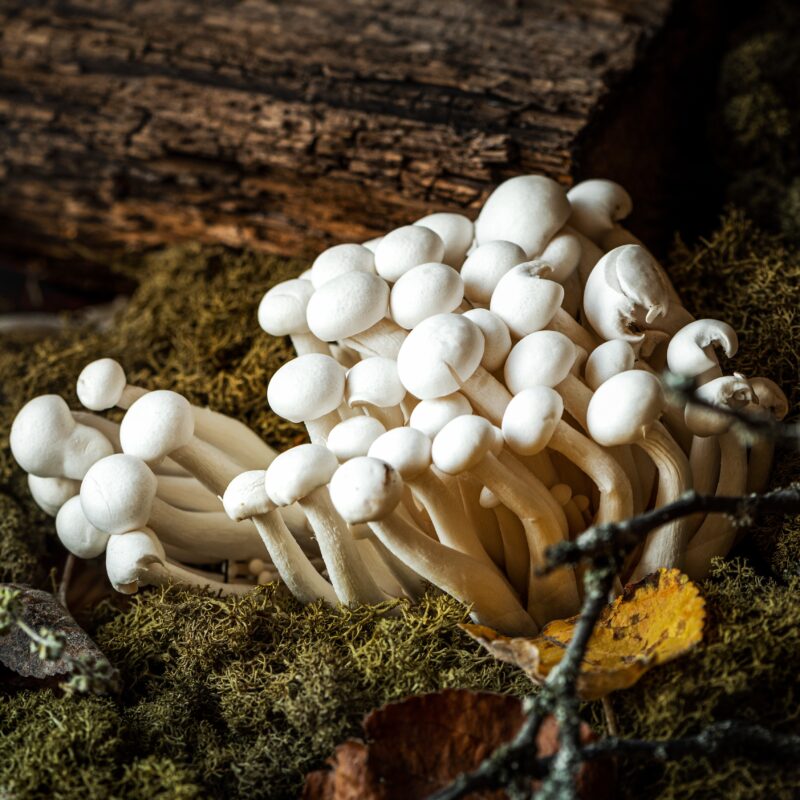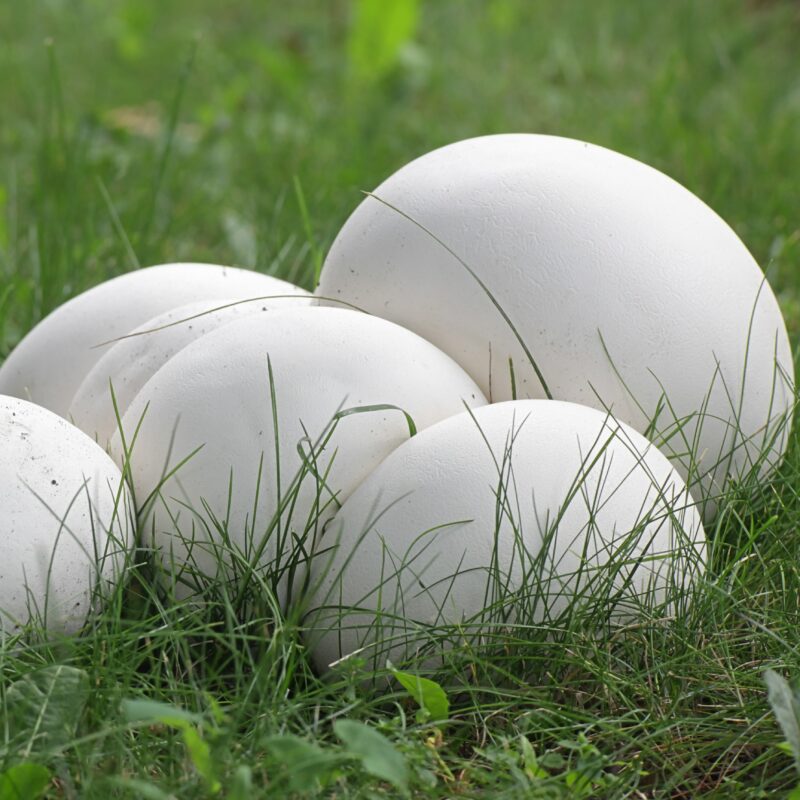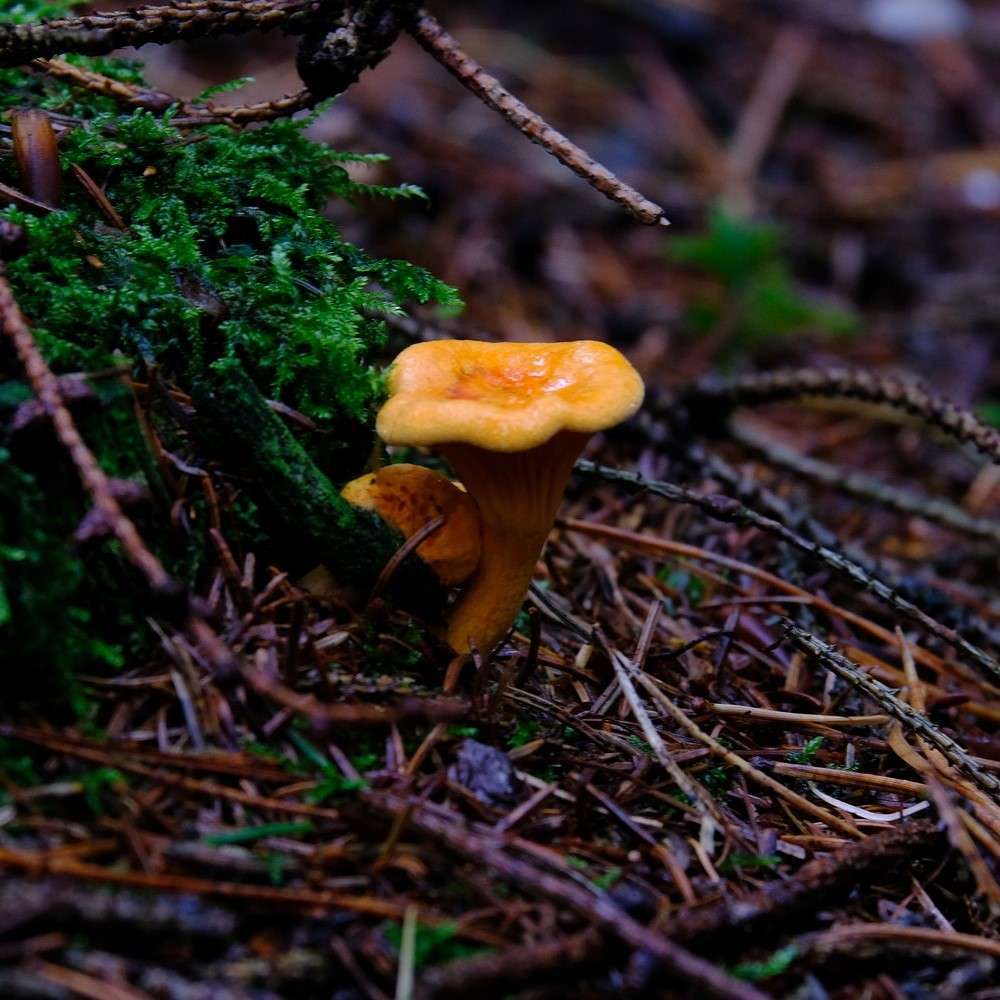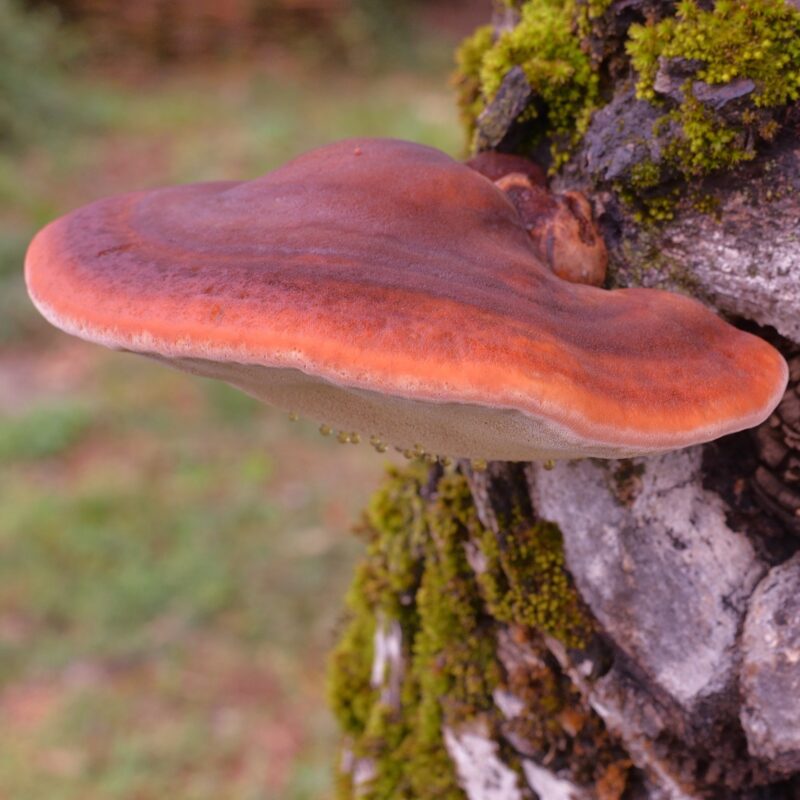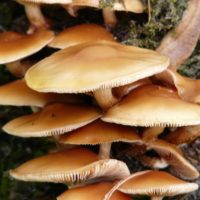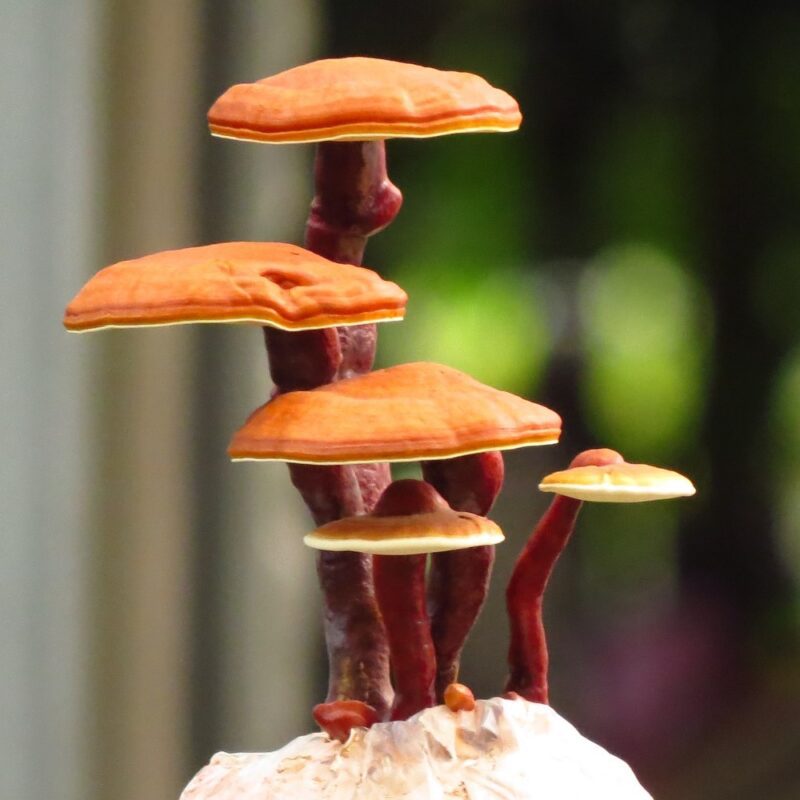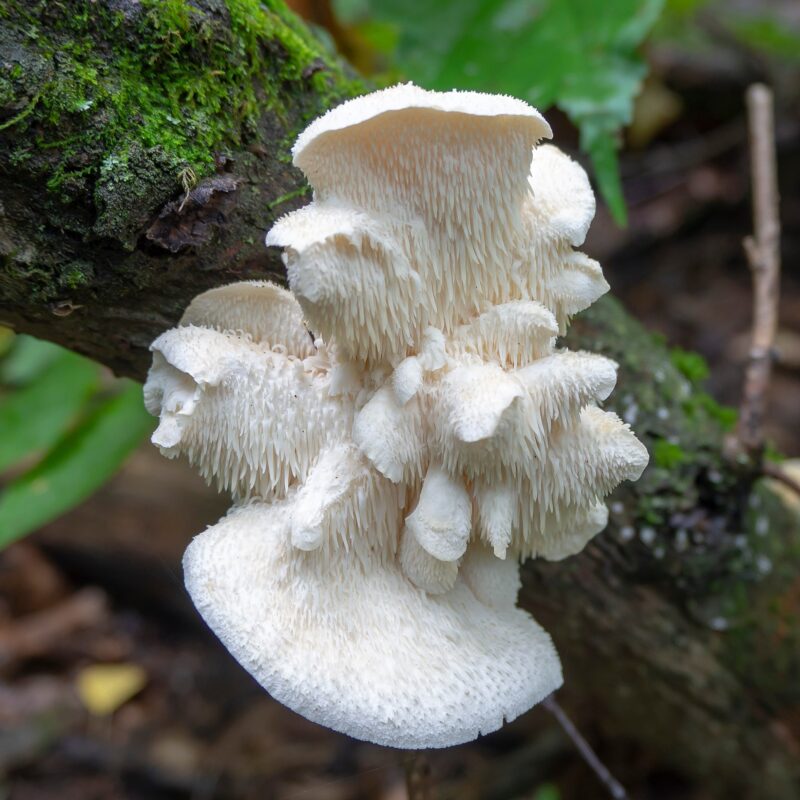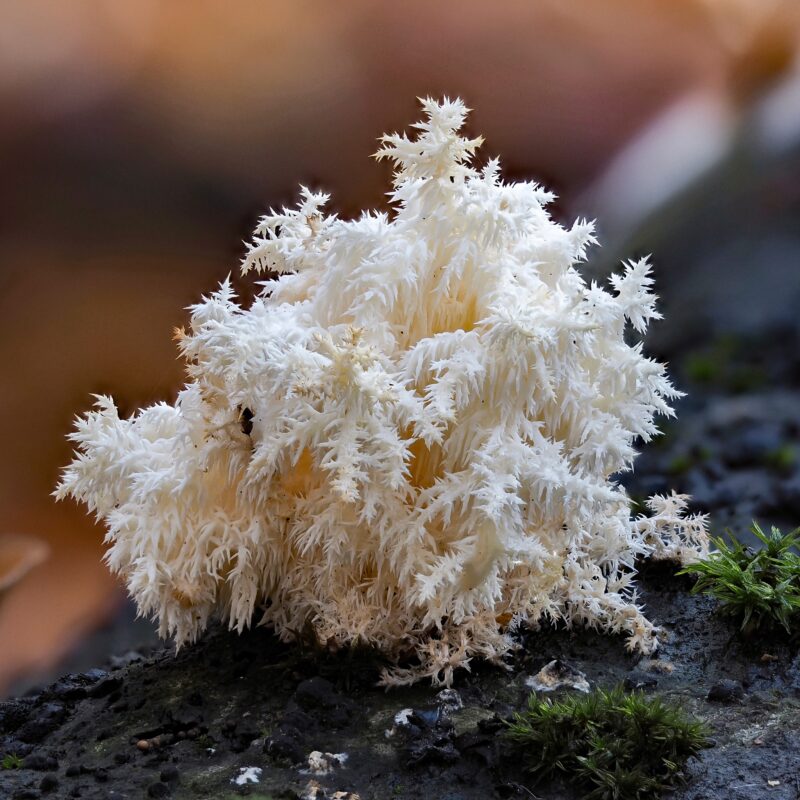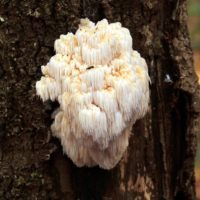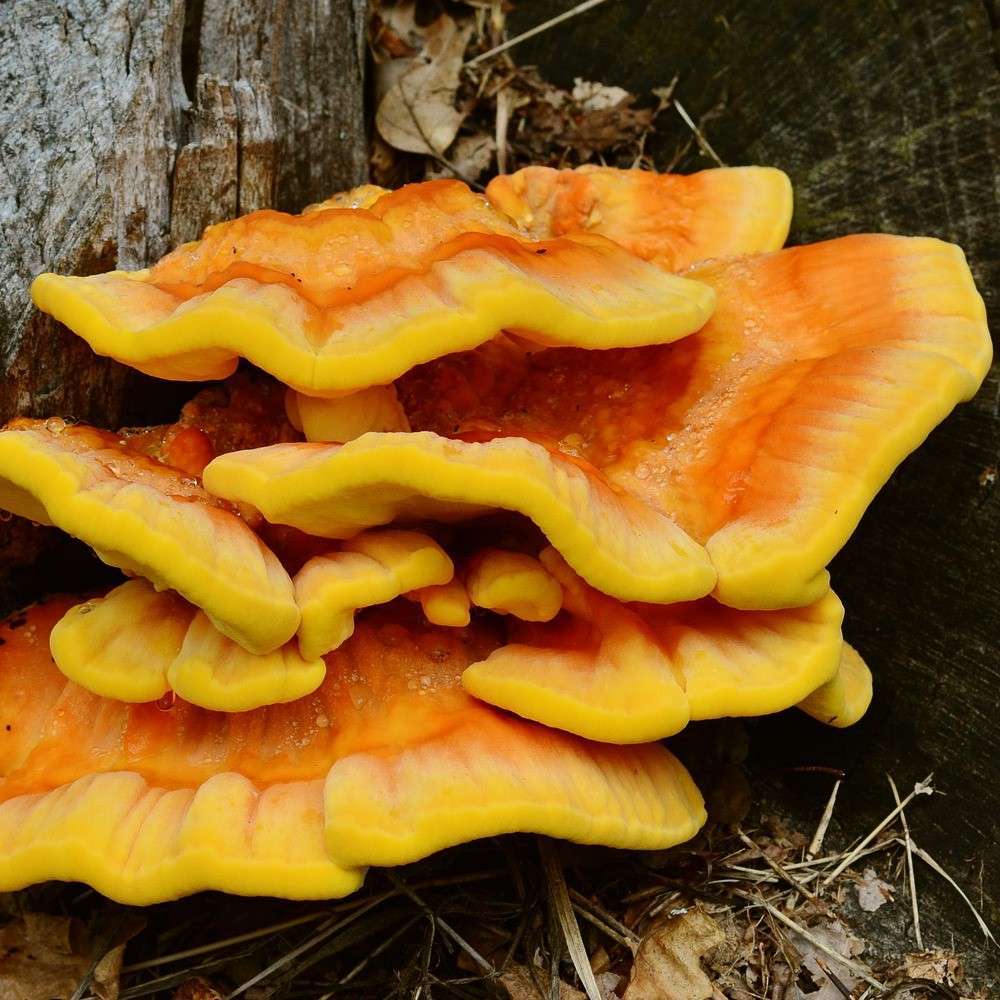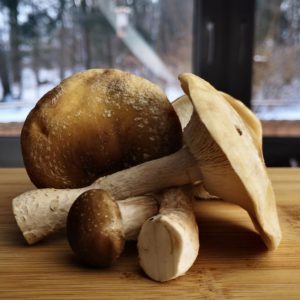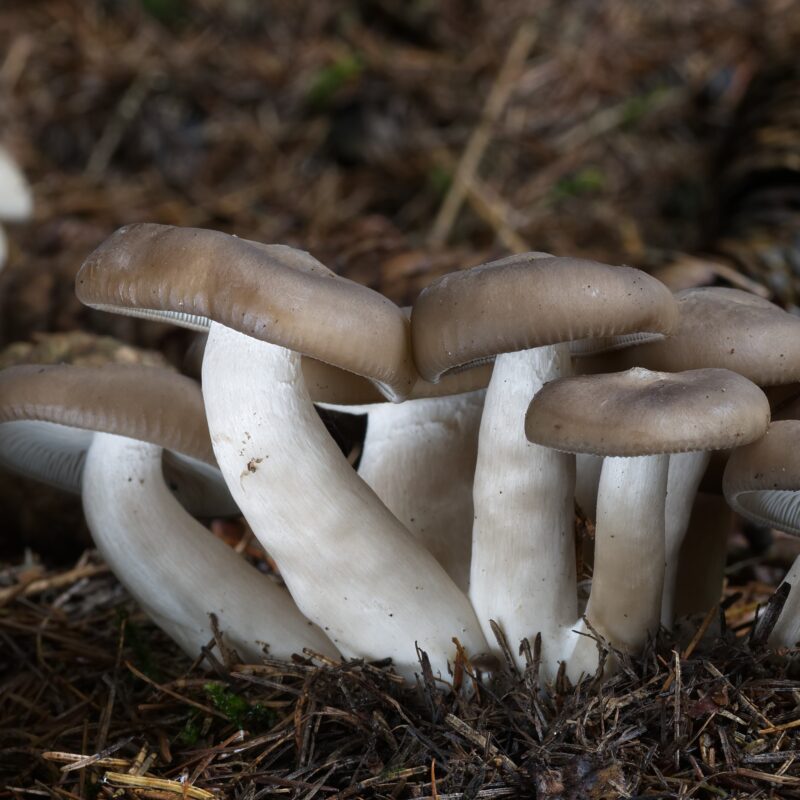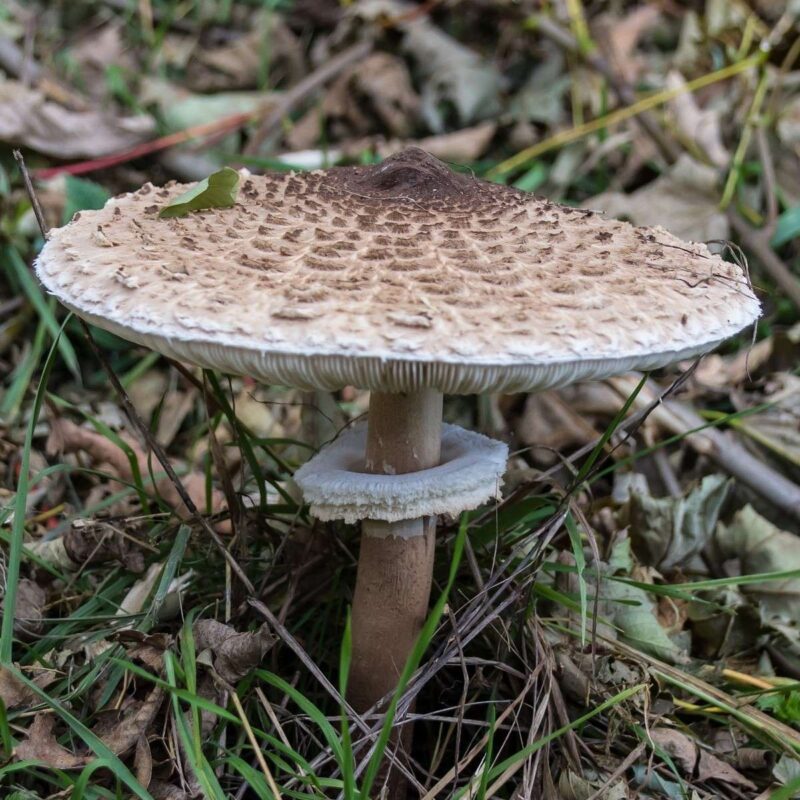Description
Properties
The Garden Giant or Wine Cap Mushroom (Stropharia rugosoannulata) is a species of mushroom is an agaric of the family Strophariaceae. In the trade it is sometimes also called brown cap.
Although the giant dreuschling is found in our region and throughout most of Europe, the species may have been introduced from the New World.
The first attempts to domesticate Stropharia rugosoannulata were made in the GDR in the 1970s. With the help of North Korean specialists, a wild find was refined into the later highly sought-after cultivar “Winnetou”. The name was probably given as a tribute to Karl May and the fact that the genetics probably actually originated in America.
The Wine Cap Mushroom is an edible mushroom, which has also been cultivated since about 1970. As a cultivated mushroom, it is grown on straw. This mushroom contains decontamination properties for the soil in the area.
Stropharia rugosoannulata is a saprobiontic inhabitant of rotting plant waste, straw, wood and bark chaff and humus and nutrient-rich soil, it grows in ruderal areas, gardens, parks on roadside embankments and roadsides, on straw heaps and garbage heaps. The fruiting bodies appear in Central Europe in spring and autumn, there is a distinct fruiting gap in summer. The Giant Drake belongs to the group of nematophagous fungi. This characteristic is due to the acanthocytes uniquely found in the genus Stropharia. This cell type is capable of mechanically destroying the cuticle of nematodes.
1. Growing
Growing Procedure
Non-sterile outdoors on straw/ bark mulch/compost or whole straw bales.
Indoors on pasteurized straw or sterile on straw/compost substrates. Other methods and substrates are conceivable and worth exploring. A cover crop is helpful to cultivate the Garden Giant, but not mandatory.
Growing
Agar Culture Media: MYA, PDYA, OMYA, DFA
Cropping: Two crops, 3-4 weeks apart
Containers for fruiting: 50kg (or larger) trays or bags.
Biological efficience: 50-100% indoors, outdoors much higher
Substrates: For indoor growing, pasteurized straw or sterilized sawdust is inoculated with cereal seeds. Spent shiitake or oyster production blocks can be re-sterilized for further reduction by Stropharia rugosoannulata.
Growing Characteristics
It absorbs toxins from the soil, such as explosive compounds, and neutralizes them. Heavy metals are also absorbed and incorporated into the fungal substance.
S
|
P
|
F
|
|
|---|---|---|---|
Temp °C |
21-27 | 10-16 | 16-21 |
Relative Humidity % |
95-100 | 95-100 | (85)90-95 |
Duration d |
25-45 | 14-21 | 7-14 |
CO2 ppm |
>20000 | <1500 | <1500 |
FAE per h |
0-1 | 4-8 | 4-8 |
Light lux |
– | 100-500 | 100-500 |
Affiliate Partner
Natural Habitat
Stropharia rugosoannulata is a Holarctic-Sub-Atlantic distributed species that has been recorded in Japan, North America, Argentina, and Europe. In Europe, finds are reported from Italy, France, the Netherlands, Great Britain, Switzerland, Austria, Germany, the Czech Republic, and Poland; northward, the species occurs as far north as Norway and Sweden. In Europe the species has only been found since the 1950s, possibly introduced from North America. In Germany, the Giant Drabble occurs scattered in the north and northwest, otherwise it is rare. The species is spreading in Germany, benefiting among other things from the increasing use of wood chips and bark mulch in gardens and parks.
In deciduous forests and/or among hardwood litter or in soils rich in undecayed woody material, especially common in wood chips used in urban/suburban ornamental plantings.
2. Identification
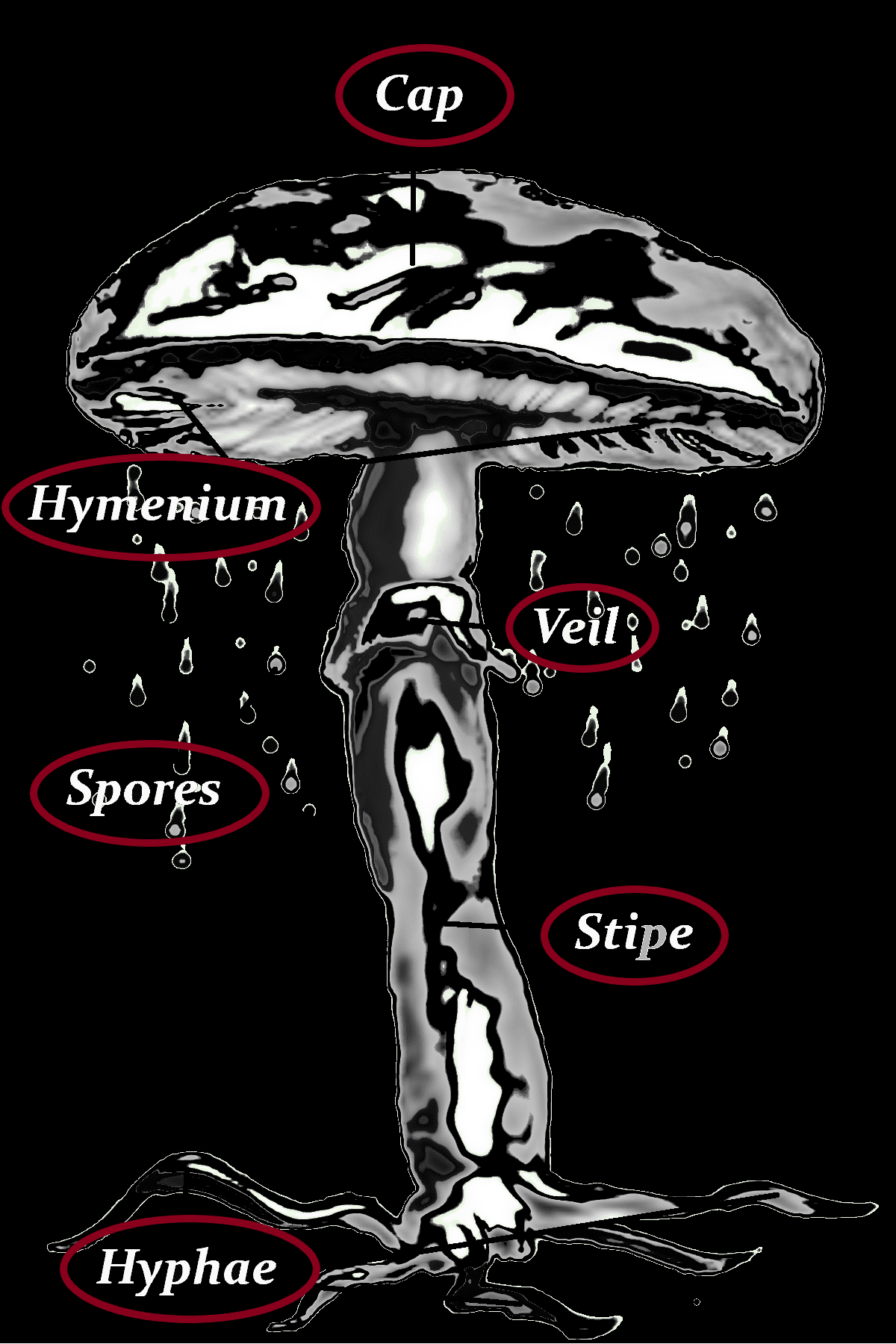
Cap
-4-13 cm
-initially reddish brown, fading with age
-broadly convex to flat at maturity
Hymenium
-lamellae
-violet-gray, ash-gray, violet-brown
-adnate
-densely brownish, with intermediate
-thin
Veil
-margin is initially curved and connected by a thick, membranous veil
-cracks with age and forms a thick, membranous ring that is radially divided with gill-like ridges and is often obscured with spores
-tooth-like remnants of the veil are often observed when the ring separates from the cap
Stipe
-annular
-thick, uniform stem that enlarges toward the base, to which the thick, white, radiating rhizomorphs are attached
Hyphae
-whitish
-linear longitudinal
-not above ground
-comparatively slow growing
-under sterile conditions, the mycelium is cottony, does not protrude from the soil, and is often flat with distinct plateau-like formations
Spores
-Yellow-brown
-7.5-10 x 5-7.5 µm, basidia 15-20 x 7-10 µm
-without buckles
-simply septate, hyaline
Danger of confusion
Stropharia rugosoannulata forma lutea, Hemistropharia albocrenulata, Cortinarius purpurascens, Cortinarius serratissimus, Cortinarius rufo-olivaceus
3. Consuming
Gourmet
Stropharia rugosoannulata is a wideley cultivated gourmet mushroom, althoug individual incompatibilities as well as poisonings have been reported with giant dreuschlings collected in parks on wood shredders.
Flesh
white, firm, unchanging
Taste
pleasant, mild, somewhat beet-like
Smell
-grain emits a unique, strong, phenol-like
-sawdust a rich, pleasant, forest-like odor
Nutritional content
.
4. Data med, edible
other names
| Chinesisch (vereinfacht) | 大球盖菇 |
| Deutsch | Kultur-Träuschling |
| Deutsch | Riesen-Träuschling |
| Dänisch | Rødbrun bredblad |
| Englisch | Wine-cap Stropharia |
| Englisch | Wine-red Stropharia |
| Estnisch | hiidvärvik |
| Französisch | Cèpe de paille |
| Französisch | Strophaire à anneau rugueux |
| Japanisch | サケツバタケ |
| Koreanisch | 턱받이포도버섯 |
| Litauisch | Raukšlėtažiedė gleiviabudė |
| Niederländisch | Blauwplaatstropharia |
| Norwegisch | rødbrun kragesopp |
| Russisch | Строфария морщинисто-кольцевая |
| Schwedisch | jättekragskivling |
| Tschechisch | límcovka vrásčitoprstenná |
| Wissenschaftl. Name | Stropharia rugosoannulata |
other names
Stropharia Rugosoannulata, Psilocybe Rugosoannulata, Stropharia Rugosoannulata Forma Rugosoannulata, Geophila Rugosoannulata, Naematoloma Rugosoannulatum Forma Rugosoannulatum, King Stropharia Garden Giant Or Gartenriese Burgundy Mushrooms, The Wine Cap, Wine Red Stropharia, Godzilla Mushrooms, Rotbrauner Riesenträuschling, Kulturträuschling, Braunkappe
| Kingdom | Fungi |
|---|
| Division | Basidiomycota |
| Class | Agaricomycetes |
| Order | Agaricales |
| Family | Strophariaceae |
| Genus | Stropharia |
| Species | S. rugosoannulata |
| Ecology | Saprotrophic |




